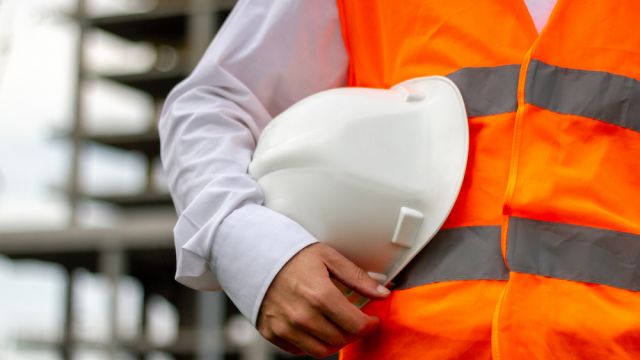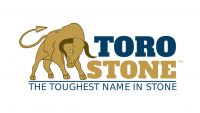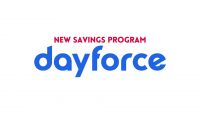Employee Onboarding: Safety
Editor’s Note: MASONRY Magazine would like to thank Zach Everett, Corporate Safety Director at Brazos Masonry for taking the time to sit down with our team and explain a bit more about safety and employee onboarding. If you have a safety question, send us an email at bbrown@masoncontractors.org and cstern@masonryagazine.com.
Onboarding a new employee is a complex process, but it does not have to be a complicated process. Any time a new mason is hired by a mason contracting company, there is much more to the process than a handshake and a few signatures. In addition to conducting the proper reference and background checks, required drug testing, and any other pre-employment screening, the new hire must also undergo extensive employee onboarding and training before they can be legally hired and turned loose with a trowel and some mortar. Of all the topics covered in the onboarding process, there are arguably no topics more important than employee safety policies and procedures. When approaching this portion of new hire training, it is essential to focus on the essential Do’s and Dont’s of the process to ensure success.
To learn more about this topic, MASONRY Magazine spoke with Zach Everett, Safety Director at Brazos Masonry in Waco, Texas. With years of experience enforcing safety regulations and procedures on hundreds of job sites, Everett has seen his fair share of new hires and has guided many new employees through the onboarding process.
#1: Don’t Assume Anything
One of the best pieces of advice he shared is to never assume anything, “but especially that someone knows as much as you think they know.” Whether a new hire has three months of experience or 30 years, Everett advises to always have every employee complete the onboarding process, particularly the safety unit. Training covers hazards like falls, the operation of heavy machinery, and electrical and chemical safety. Masons with many years of experience may have previously received this training, but it is imperative they still undergo the same onboarding process to ensure their knowledge of safety policies and procedures is up to date. This is important not just for the new hire’s safety while working on the jobsite, but also for the safety of all other employees around them. This protects all workers equally and helps to prevent accidents both large and small.
#2: Prepare for New Hire Orientation
Everett’s next suggestion is a pretty common sense one, but it really makes the difference between adequate and exceptional new employee onboarding safety training. Properly preparing for new hire orientation may seem like a challenging or even daunting task, but with some help from the MCAA, this process can be streamlined and still incredibly effective. He recommends the MCAA’s many available training resources because “they have a great selection, having videos or at least printed materials for someone to sit down and explain each part and then making sure it is done in the person's language.”
This brings up an important point about preparing adequate materials and resources for new employee onboarding, which is ensuring that the instructional materials and presentations are available in multiple languages for accessibility and ease of instruction. Spanish is the most commonly used language apart from English in the United States, and particularly on job sites, and it is the employer’s responsibility to acquire and maintain updated training and educational materials for new hires and current employees alike. Everett also recommends having at least one superintendent, assistant, or another employee on staff that is bilingual to help with translation needs as it pertains not only to orientation training but also with communication on the jobsite.
#3: Ensure New Hires are Properly Equipped
Employers are responsible for the health and safety of their employees while at work on the jobsite and this includes outfitting all workers with the proper equipment. The outfitting process is part of onboarding new hires, and “every employee is going to have to have a hardhat, safety glasses, gloves, a harness and lanyard, and proper boots” lists Everett, as well as adequate ear protection. Each piece of PPE is essential for worker safety, especially when working with heavy equipment and materials.
Employees not only need to be provided with the proper equipment but also need to be trained on how to properly wear and use it, as well as to regularly check equipment for wear and tear and replace when no longer needed. For example, steel toe boots that do not fit properly can cause blisters, and a cracked toe or worn sole can cause the mason a greater risk of injury if an accident were to occur. Additionally, damaged or improperly fitting eyewear can expose the mason to a huge risk of eye injury while operating a masonry saw, as can damage or improperly fitting hard hards. Finally, the harness and lanyard are of the utmost importance when it comes to fall arrest safety, and should be carefully checked and fit properly to ensure a masons safety when working at height.
#4: Be Aware of Hiring Challenges
The great need for masons on construction sites has made hiring more difficult in the last decade, and more recently an additional challenge has presented itself. “One of the challenges is is remote hiring,” explains Everett. “Because not everybody can run through the main office, the safety director has to be on top of making sure that whatever happens remotely happens correctly.” While the hiring process is typically more tightly controlled by management, the onset of the COVID-19 pandemic coupled with the operation of multiple crews at multiple job sites simultaneously, sometimes across the state, presents some difficulty when it comes to hiring. While remote interviews do offer some flexibility, they are by no means a perfect solution for these issues. Onboarding and training are certainly possible to conduct remotely, especially as many training tools are now available digitally or online, but this makes properly outfitting new hires more difficult.
#5: Take the Time to Train
Proper training takes some time and is not to be rushed through quickly. While “it really depends on the employee, it's going to be a day,” advises Everett. He further explains that “you might be able to get through videos and paperwork, let's say for four hours. But then they're not done, you're going to go out into the field as well.” On the job training is essential so the new hire can gain some familiarity with the new jobsite and apply their new training. This means taking the new hire and pairing them with a more senior employee so they can gain their bearings and ask any further questions as they arise.
“You have to go out into the field and have this guy under your wing, or put them with a lead man to work beside him so that training continues even after your paperwork is is done,” concludes Everett. Without this second part of the training process, the new hire could be left feeling confused and unsure of what to expect or where to ask for help. By pairing up new employees with others who have been with the company for a number of months or years, there is an opportunity for new hires to communicate and learn more about the company’s processes. It is worth taking the time to train, and it can assist new employees to integrate into the fold quickly and confidently while helping to facilitate collaboration between work crews.
#6: Remember COVID-19 and Health Protocols
The COVID-19 pandemic is not new news, but until the United States achieves herd immunity, health safety protocols must part of employee onboarding safety training. “Face coverings, cleaning your tools, and using wash facilities before you eat or when you come out of the bathroom, just reminding people to stay on top of things” are Everett’s recommendations when it comes to health safety protocols. Enforcement is the daily responsibility of the job site supervisor, but these health and safety protocols and procedures must be included in employee onboarding- especially face coverings in accordance with OSHA requirements. It may still feel a little strange, but these rules and regulations are in place to keep workers safe, and new hires need to not only properly understand these requirements but also be sure to adhere to them. When it comes to the pandemic and other illnesses during the winter season, compliance with cleaning and sanitizing gear may be an annoying extra step, but it is effective in keeping employees healthy.
While these tips are by no means comprehensive, this is certainly an excellent place to start for any manager or supervisor at a mason contracting company. For any additional questions, be sure to refer to the MCAA website, masoncontractors.org, for resources, additional information, videos, news, and more.
About the Author



















